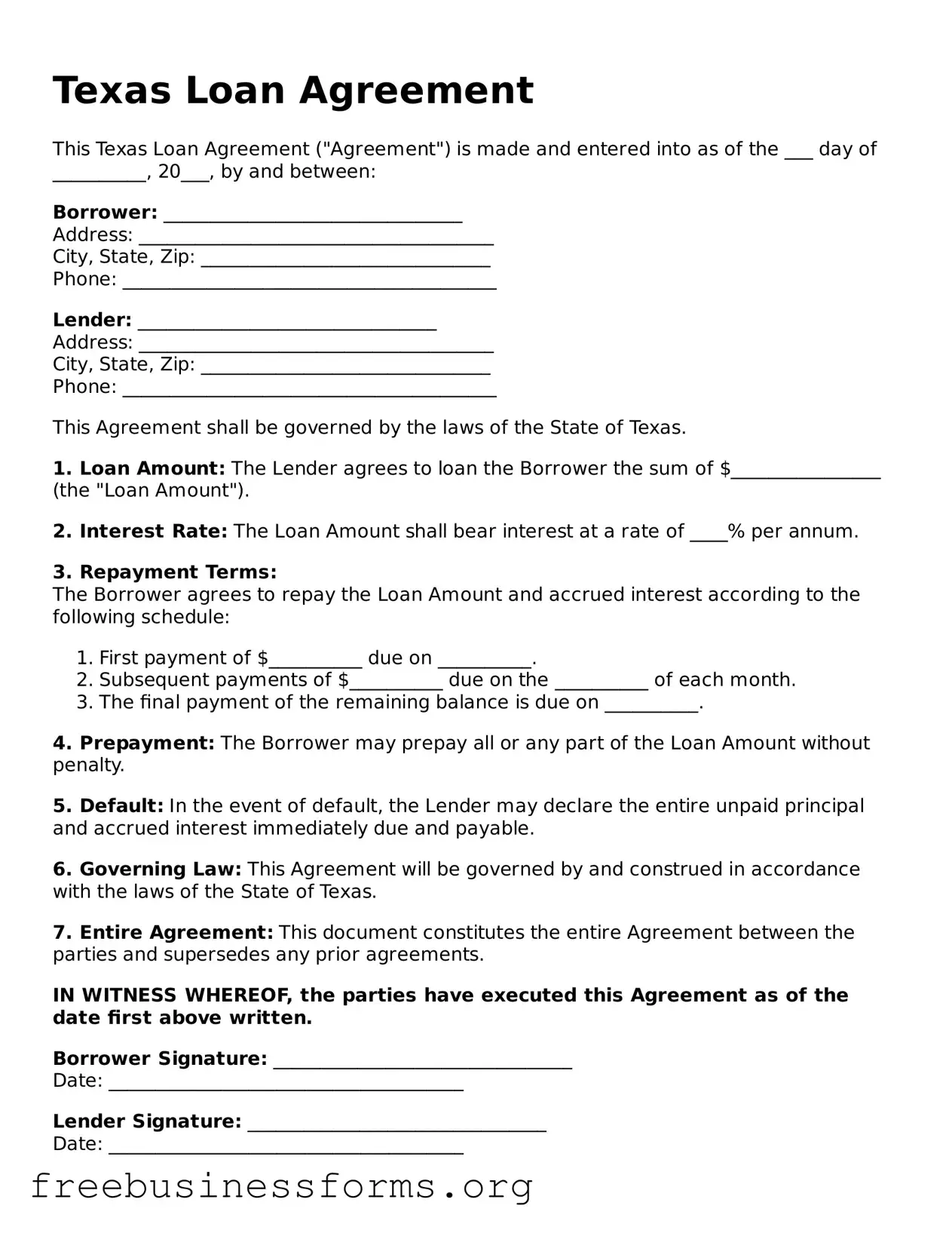Texas Loan Agreement
This Texas Loan Agreement ("Agreement") is made and entered into as of the ___ day of __________, 20___, by and between:
Borrower: ________________________________
Address: ______________________________________
City, State, Zip: _______________________________
Phone: ________________________________________
Lender: ________________________________
Address: ______________________________________
City, State, Zip: _______________________________
Phone: ________________________________________
This Agreement shall be governed by the laws of the State of Texas.
1. Loan Amount: The Lender agrees to loan the Borrower the sum of $________________ (the "Loan Amount").
2. Interest Rate: The Loan Amount shall bear interest at a rate of ____% per annum.
3. Repayment Terms:
The Borrower agrees to repay the Loan Amount and accrued interest according to the following schedule:
- First payment of $__________ due on __________.
- Subsequent payments of $__________ due on the __________ of each month.
- The final payment of the remaining balance is due on __________.
4. Prepayment: The Borrower may prepay all or any part of the Loan Amount without penalty.
5. Default: In the event of default, the Lender may declare the entire unpaid principal and accrued interest immediately due and payable.
6. Governing Law: This Agreement will be governed by and construed in accordance with the laws of the State of Texas.
7. Entire Agreement: This document constitutes the entire Agreement between the parties and supersedes any prior agreements.
IN WITNESS WHEREOF, the parties have executed this Agreement as of the date first above written.
Borrower Signature: ________________________________
Date: ______________________________________
Lender Signature: ________________________________
Date: ______________________________________
